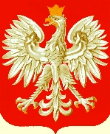About Galicia
Administrative districts
is often misunderstood, misinterpreted or simply not known by many genealogists....even those researching their roots there! First, Galicia is an English term. In Polish it is known as Galicja and Ukrainian it is known as Halychyna (Галичина) When North American genealogists use the term Galicia, they are usually referring to a region of the Austro-Hungarian Empire. (In German, the term is Galizien or the full name of the province Galizien und Lodomerien.) This region was the most northeast province of the Empire, stretching from roughly Kraków/Krakiv in the west to roughly Tarnopol/Ternopil in the east. Today, this area would be South-Eastern Poland and Western Ukraine. The ethnic background of the Austro-Hungarian province of Galicia was mixed. Roughly speaking, the western half was predominately Polish and Roman Catholic while the eastern half was predominately Ukrainian and Greek Catholic. This boundary is roughly the border between today’s Poland and Ukraine. Each half, however, had a sizeable minority of the other ethnic group. Additionally, there were Jews, Germans, Slovaks, Rusyns, and Armenians. Historically speaking, the concept of Galicia goes back beyond the naming of the Austrian province in 1772. The term Galicia historically refers to what the Austrian Empire considered the eastern half of Galicia. The western boundary of this Historic Gal icia is the Wisłok River, its eastern boundary is the Zbruch River.Galicia was first a Ukrainian (Eastern Slavic) principality from 1141-1340. The term comes from the name of the city Halych (in Polish Halicz), which was the capital of this early principality. Starting in 1340, the region was fought over and changed hands several times between Hungary, Poland and the Ukrainian princes. In 1349, the Polish King Kazimierz the Great took control of the city. It remained in Polish hands until 1772 when the region was lost to the Austrian Empire during what is known as the First Partition of Poland. (Other parts of Poland were divided up between other neighboring empires: Prussia and Russia.) This site will focus on Historic Galicia, in other words, on the eastern half of the Austro-Hungarian province of Galicia. In order to be fair, I will often refer to geographic regions found in this region with both Polish and Ukrainian spellings. Mind you, the location is the same, it is only an issue of language. However, this issue of language ties into aspects of culture, history, religion, and politics.
Terminology of Eastern Galicia/Western Ukraine The following is a list of various names used to describe the region over the centuries, based on Paul Robert Magocsi's book Galicia: A Historical Survey and Bibliographic Guide. It is certainly not meant to be memorized. Furthermore, most of the terms found on this list should only be used in their historic context. (It would be like referring to the White House as being in "one of the thirteen colonies".) The term "Eastern" Galicia has a strong negative connotation to the Ukrainian, as this term was used by Poland to underline its control over the region between WWI and WWII. I do not use this term to conjure up this old political strategy of inter-war Poland’s attempt to keep control of the region with its Ukrainian majority. I use this term because it is MOST familiar to many Polish-American and Polish-Canadian genealogists to describe the region from where their ancestors came.
Medieval period Medieval period/ Polish-Lithuanian period Polish-Lithuanian period Austrian period (1772 – 1918) 1918-1919 Interwar Poland Nazi German occupation post World War II to present
The largest city in the region:
|
|
www.halgal.com
Questions and Comments to Matthew
Bielawa |

